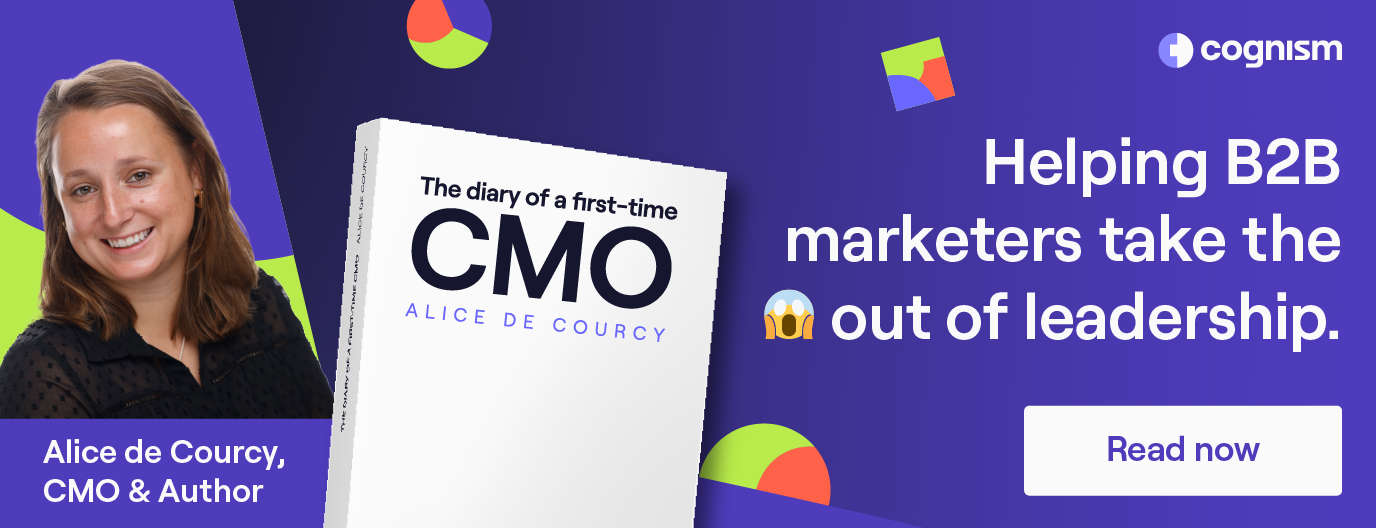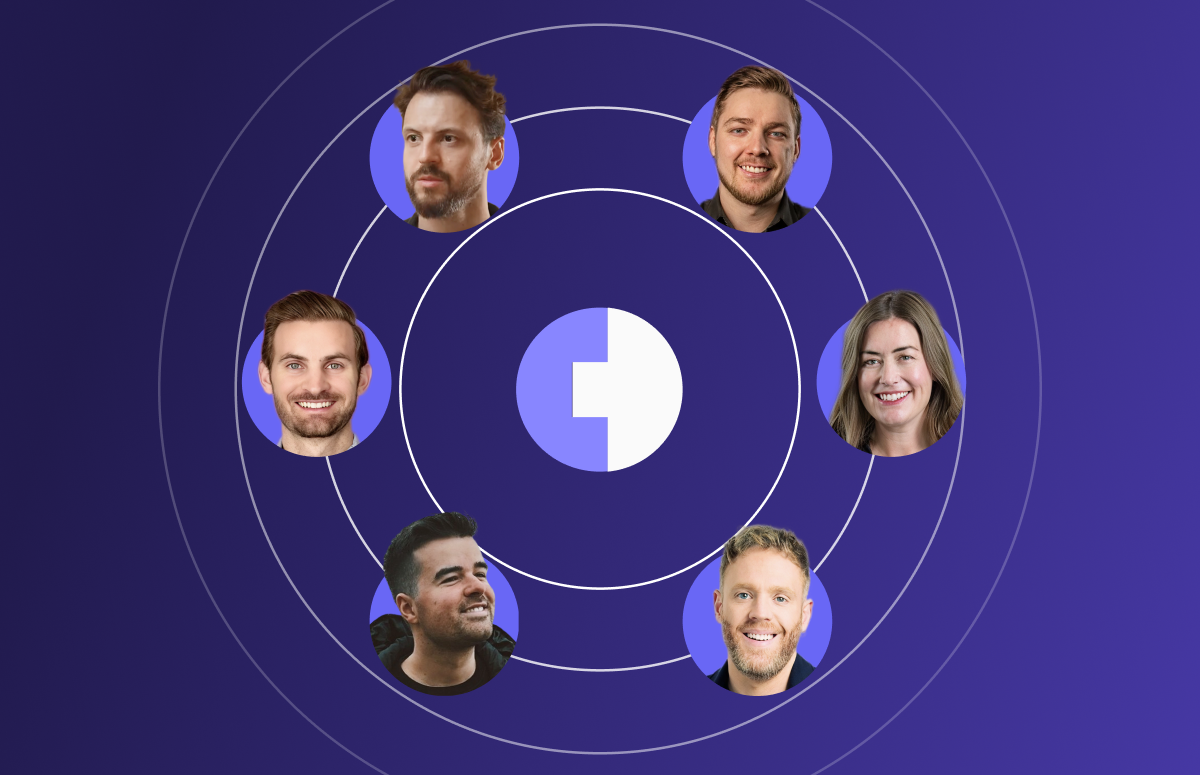Ungated Content: Why It Brings in Better Leads
To ungate content or gate content - it’s one of the great debates of B2B marketing.
On the one hand, gating your content can help you to generate, qualify, nurture, and personalise leads.
But on the other hand, ungating your content can rapidly help spread awareness about your brand and the product.
If you’ve followed Cognism for a while, you’ll already know gated content is not our M.O. We have no gated content and prefer not to.
Why?
This article will explain everything, and by the end, you’ll want to chuck out your gated content strategy!
Let’s start 👇
What is gated content?
Gated content requires users to fill out a form or buy a subscription before accessing specific content on a website. It’s a common lead generation tactic that helps brands collect important data about their potential customers.
Sales and marketing teams who follow the lead gen model may interpret someone opening the “gate” as an expression of buying intent. Then, they usher them through the sales funnel.
Marketing teams typically choose to gate content deemed to be high value. eBooks and webinars are the most common forms of gated content. Putting a lone blog, for instance, behind a gate is going to be a hard sell…even for the low price of zero dollars!
In module 3 of the DG Playbook, you can learn more about how Cognism ungated its content & built a media machine. 👇
What is ungated content?
Ungated content is content that is freely accessible to all users without any barriers or requirements to provide personal details.
However, while the difference between gated and ungated content is very simple, digging into the rationale of the two reveals a schism at the heart of B2B marketing.
Gated content typically follows the lead generation school of thought, while ungated content is a foundational principle of demand generation. Demand generation is how we approach marketing at Cognism Towers!
What is demand generation?
Demand generation is Cognism’s preferred B2B marketing strategy. It’s the process of increasing awareness and demand for your product or service. Using freely available content, the goal is to expand your audience and generate interest in your brand.
It’s an approach that empowers potential clients to become interested in your brand at their own pace, without friction.
It values declared intent, such as a demo request, over assumed intent, such as a content download.
While still ultimately oriented towards winning leads and growing the sales pipeline, demand generation takes an indirect route.
If you want to learn more about how our CMO, Alice de Courcy, took us from a lead generation to a demand generation model, check out her (ungated) Diary of a First-time CMO 👇
Gated vs ungated content
In lead generation, content gating is the initial stage of the sales funnel and a way of generating leads. You can generate leads by offering content in return for a visitor’s contact information.
A name and an email address are the minimum data requirements to open the gate, but some companies ask for additional information such as company, job title and intent. Some will even reject anyone not using a corporate email address! These companies want a small number of perfect little leads.
Leads are potential customers who share their contact information to learn more about your products or services. Targeted marketing material can guide them through the funnel and ultimately make a purchase.
But does gating content still work?
Or is offering ungated content better for converting your ideal customers?
Let’s explore 👇
Why gate content?
One reason is lead generation.
By putting sought-after knowledge behind a gate, potential customers are more willing to provide their contact information. Because they willingly gave it, businesses can use their marketing data to power lead-generation strategies.
For instance, you can enter a customer into a targeted campaign or a lead nurture.
Additionally, gating content can help qualify leads. If a user is willing to fill out a form or provide their information to access content, it may indicate a higher level of interest in the brand or product. This can help sales teams prioritise leads and focus their efforts on those more likely to convert.
Another reason for gating content is to drive traffic and engagement. By offering exclusive content behind a gate, businesses can entice users to provide their information to access it. This can increase website traffic and engagement and ultimately lead to more conversions.
Why gating content no longer works
The trouble with gated content is that prospective customers are accustomed to instant access to information at their fingertips; they don’t want to exchange their personal information for content.
As a result, many target customers are deterred by brands that gate content, and building a reputable reputation with gated content isn’t the only challenge. Here are a couple more:
Transactional intent
When potential buyers exchange B2B data to download an eBook, they demonstrate transactional intent, but transactional intent isn’t buyer intent.
Liam Bartholomew, VP of Marketing at Cognism, explained:
“Transactional intent doesn’t mean anything. I might be willing to hand over my contact details for great content. But I have no intention of buying.”
“I’ll give my contact details away for a quiz to win a chocolate bar!”
People get put off when sales start contacting them because they have no intention of buying.
It doesn’t make for a good customer journey, either.
You might want to read content, but don’t because a salesperson will hound you.
Previously, customers didn’t think like this. They’ve become programmed to expect this over time.
Lead generation is the natural response to aggressive growth targets.
Often, companies are looking for the fastest way to generate leads.
Is this approach short-sighted?
Liam told us:
“Lead generation and content is just another form of outbound. If you launch a lead generation model, you might find you make some gains pretty quickly. But then it will peter out because there’s still no intent to buy.”
“If you’re patient with demand generation, you’ll reap the rewards later. Or you can be impatient for what seems like quick wins, to begin with, but it just doesn’t scale.”
With a lead generation model, the sales team will be busy but inefficient.
Ultimately, SDRs are good at their job; they get meetings booked. They can hit their target, but the appointments don’t go anywhere.
Liam explained:
“It happened during our journey. We generated thousands of leads, yet the revenue contribution remained stuck at the same level. I’ll give away my contact details and attend a meeting, but I won’t sign. Very few of those leads will go on to become revenue.”
Content isn’t fun
The problem with lead gen is that it forces you to create content that isn’t fun to consume.
Fran Langham, Global Head of Demand Generation at Cognism, told us:
“We created a 100-page eBook on cold calling, whose primary goal was generating leads. The content was good, but the format is way too restrictive. At the time, we didn’t think of distributing it elsewhere.”
Instead of leveraging creativity, you’re stuck with a boring format for bored prospects.
And does it even work?
If you like lists of people with inaccurate details and non-work emails…
Still not convinced?
Alice de Courcy, CMO at Cognism, makes the case for ungated content 👇
How do you ungate content?
To understand how to ungate your content, you must understand why you would want to do so.
For Cognism, ungating content is a prerequisite for a demand generation marketing strategy.
A demand generation team’s goals might comprise of:
- Educating and entertaining your ICP.
- Creating bonds and associations allows them to connect with your brand and product offering.
- Engaging your ICP before or during the buyer research phase.
- Developing a desire or need for what you provide.
To achieve those goals, your potential customers need unfettered access to your content - which means no gating!
Here are five steps to creating ungated content that feeds your marketing funnel:
Step 1: Get buy-in for ungating content
Ungating content is all good, but how do you persuade higher-ups to invest?
If you straightforwardly ask your CEO if you can ungate your content, you won’t get a good response. They’ll rightly question where pipeline will come from instead.
This is a challenge that Alice de Courcy faced in our transition to a demand gen model.
Alice brought a hypothesis to her CEO and asked for a modest testing budget. Over three months, alongside BAU-gated content, Alice tested the ungating of some of our most successful content. In correlation with the increased spend on ungating, we saw an uptick in inbound leads.
She said:
“When we started, we still had a sales team that relied on content leads. So you can’t just suddenly start switching things off.”
So, what should you do if you don’t instantly jump from lead gen to demand gen?
Back to Alice:
“Switch off the campaigns with the highest cost per lead. We set a benchmark for campaigns to be at $20 CPL or less.”
“That way, you can generate more for less and then take the money saved into underperforming campaigns and related demand gen activity.”
A rough trend, rather than precise attribution to specific content pieces, was enough to decide to pull spend on the highest cost-per-lead campaigns and put it into demand generation.
Ultimately, Alice showed that the strategy freed up time for SDRs to make outbound calls and convert leads at higher rates.
By incrementally allocating budget to ungated, we kept leads coming in. Everyone was happy!
But it’s important to remember: the switch is gradual. As Alice said:
“We didn’t just stop all gated campaigns and then switch on all demand gen activity. We gradually moved the money into demand gen as we started to see the results.”
Step 2: Build an ungated media machine
A media machine, what does that even mean?
It’s about building your audience within your key subscriber channels.
For every company, this will look different. It depends on your persona and who you’re looking to speak to.
It involves creating processes that enable you to produce top-quality content consistently. This allows you to power many other areas of your marketing engine.
Without lead gen, you’ll have plenty of time for the new strategy.
There are three critical ingredients for a successful media engine:
- Quality of the content.
- A point of view.
- Consistency.
Alice has particular standards for content. She told us:
“We don’t want to put content out there unless you feel someone can learn something new. It should give them a competitive advantage; that’s the guardrail for quality.”
A point of view is essential; it helps focus on specific themes.
Alice explained further:
“To be known in your space, consistency is the most crucial ingredient.”
What if you have a small team?
Alice told us:
“Your team size shouldn’t prevent you from taking this approach. You just need to be more careful about where you focus your efforts.”
Repurposing is an effective hack. Content from live events and podcasts is excellent for this.
Cognism breaks up Demandism Live in different ways, including podcasts, paid social media, organic social media, newsletters, and blogs.
Involving SMEs in content creation keeps your insights cutting edge.
Step 3: Decide what content to ungate
If you base your marketing activities on generating MQLs, then it’s best to keep the following content ungated:
- SEO-focused blog content.
- Resources and product information.
- Customer support material.
If you follow a demand generation strategy, most or even all of your content should be ungated.
In the case of gated webinars, due to the need for an email, you can repurpose the webinar into different forms of ungated content, such as a blog or live stream upload to YouTube.
Remember that this content doesn’t need to stay on the blog or resources. You can share it anywhere your audience will find it.
Liam told us:
“You could push the content out more widely. For example, relevant content on product pages. This way, your whole site is a media base for people to visit.”
The next question to ask is:
Is it easy to navigate through content on your site?
It’s a crucial question to ask yourself.
Could you do things better?
Here are some things we’re trying at Cognism:
- Using Drift to highlight relevant content.
- CTAs and dynamic recommendations.
- Embedded video and audio.
- Interactive pages.
Step 4: Split and optimise content for different markets
You must work to optimise your B2B content to thrive in the ungated environment.
You’ll need to tweak your content strategy, encouraging your audience to learn about your business and get them ready to convert.
Repurposing content in different formats, mainly to be optimised for in-feed, is a good idea for top-of-funnel.
For instance, this could involve repackaging a library of long-form video content as snippets or repurposing articles and e-books as carousels.
Liam said:
“Beforehand, you would’ve been looking for conversions. But now, you’re entirely optimising content for in-feed consumption. You just want people to view and consume the content.”
“Take your articles and eBooks and change them into nice-looking carousels.”
“There’s a sense of community around the content - the audience plays around with the carousel. And hopefully, they’ll be liking and commenting on it.”
This optimisation for in-feed consumption shifts the KPI focus to impressions. You want people to consume your content rather than complete a particular goal.
For bottom-of-funnel campaigns, you want to target customers in the purchasing phase. This means serving them product-focused messaging, ungated product tours, and content that educates them about your company.
Whatever you do, don’t gate bottom-of-funnel content. Customers have an intent to buy and want to know about the product directly. There’s no good reason to withhold content at this stage. They’re so close to becoming a lead! Let them become one.
Depending on the market, you’ll have different stages of brand awareness. For Cognism, ungating mid-market content was a problem because of lower brand awareness.
Without awareness, momentum can be slow to gather. You must balance maintaining pipeline through existing lead gen efforts and moving spend to inbound.
The lower the awareness, the slower the transition will be.
💡Top tip:
Avoid trying to predict where your customers are in the funnel. Give everything to everyone, and don’t artificially limit who can see what.
Step 5: Build email nurtures on demand
Is it time for a Netflix-style email nurture?
The purpose of ungated content is to deliver it in the way people like to consume it.
Can we judge when someone is ready for that next piece of content?
We shouldn’t be prescribing when anyone is ready for anything!
The idea of on-demand nurture is to access it as and when you want.
What could this look like?
Landing pages with a dropdown menu, providing options for content access.
You can access the content in one day or spread it out. The result is a tailored journey, offering maximum value to your audience.
Liam told us:
“I want to take the landing page further by making it more interactive. People can return when they want, even if they finish the lead nurture.”
Measuring the success of ungated content
Measuring the impact of content ungating is absolutely essential.
Start with the basics and measure the first few months of your demand generation strategy. You should be tracking:
- Spend.
- Leads.
- Meetings booked.
- Meetings attended.
- Sales qualified opportunities.
- Deals.
- Monthly recurring revenue.
Split the funnel into channels that make sense, such as inbound, paid and content.
You can also measure the impact of content ungating in your sales cycle. If your campaigns are working effectively, you should see a speeding-up of your sales cycle.
What was previously called “vanity metrics” become important in demand gen.
Engagement rates, likes, views and cost-per-view reflect how your customers interact with your ungated content. This builds a picture of what your customers like and are interested in, helping direct where you put your money and resources.
We ask our customers how they found us on our thank you page.
Human attribution is extremely useful; sometimes, responses call out specific content. It gives you a clearer picture of where your customers first discovered your brand so you can double down on content in that area.
More insights from Cognism
Enjoyed this article?
Give us a follow on LinkedIn for daily insights behind Cognism’s winning strategies 👇


/SMB%20ABM/Blog_Image_How%20SMBs%20Can%20Run%20Enterprise-Level%20ABM%20on%20a%20Lean%20Budget%20%20Resource%20Card.webp)

